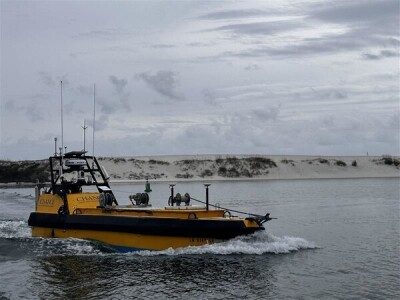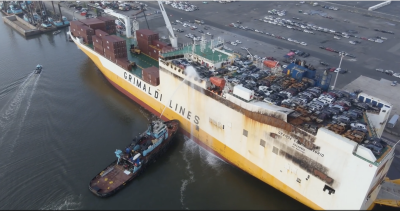The Jones Act remains a hot topic in the workboat industry.
Jovi Tenev, a partner in the maritime group at legal giant Holland & Knight, moderated a session on the subject Wednesday at the Marine Money Week conference in New York. At a high level, the Jones Act (which requires vessels that operate in the domestic trades be U.S. built, owned and crewed) presents “barriers to entry” and a limited capacity for newbuilds, said Pål Lothe Magnussen, president and CEO of American Shipping Company ASA, owner of a dozen tankers built at Philly Shipyard and on bareboat charter to Tampa, Fla.-based Overseas Shipholding Group. “The supply side looks very robust now,” pointing to only one Jones Act medium-range (MR) — approximately 48,000-dwt — tanker not on a time charter. “Over time, we can expect more stability.” He pegged the cost of a U.S. newbuild MR at around $130 million.
Ben Nolan, equity analyst at investment bank Stifel Financial Corp., said that the legal protections, with legislative underpinnings of the Jones Act dating back nearly 100 years, brought a “double edge.” The Jones Act is a “deep moat,” he said. “Yes, that’s attractive, but somebody could always test this legislation. It could be contentious.”
As for Jones Act shipyards such as General Dynamics/NASSCO (a second U.S. yard that can build MR tankers), he said that “they and their compatriots carry a big stick in getting things done in Washington, D.C.” In the brownwater sector, U.S. building prices were competitive, Nolan added.
Magnussen described a situation in Washington with considerable support for the Jones Act irrespective of what administration is in power and strong support from both sides of the aisle. Moderator Tenev noted the legal framework in place sometimes creates challenges, with an example being foreign shareholding issues in cases of financial restructurings where bank debt, sometimes from non U.S. institutions, has been converted into equity in bankruptcy reorganizations. “We created instruments to deal with it.”
Will Terrill, president and CEO of US Ocean LLC, owner of a fleet of seven U.S.-flagged multipurpose vessels, said that in contrast to the generally modern privately owned fleet, the U.S. government owns 61 vessels (45 owned by the U.S. Maritime Administration and 15 controlled by the Military Sealift Command), with an average age of over 40 years and a number no longer holding valid Certificates of Documentation from the Coast Guard. Terrill pointed to a need to renew these fleets. “There is an opportunity for industry to come in and help.”





.png.small.400x400.png)